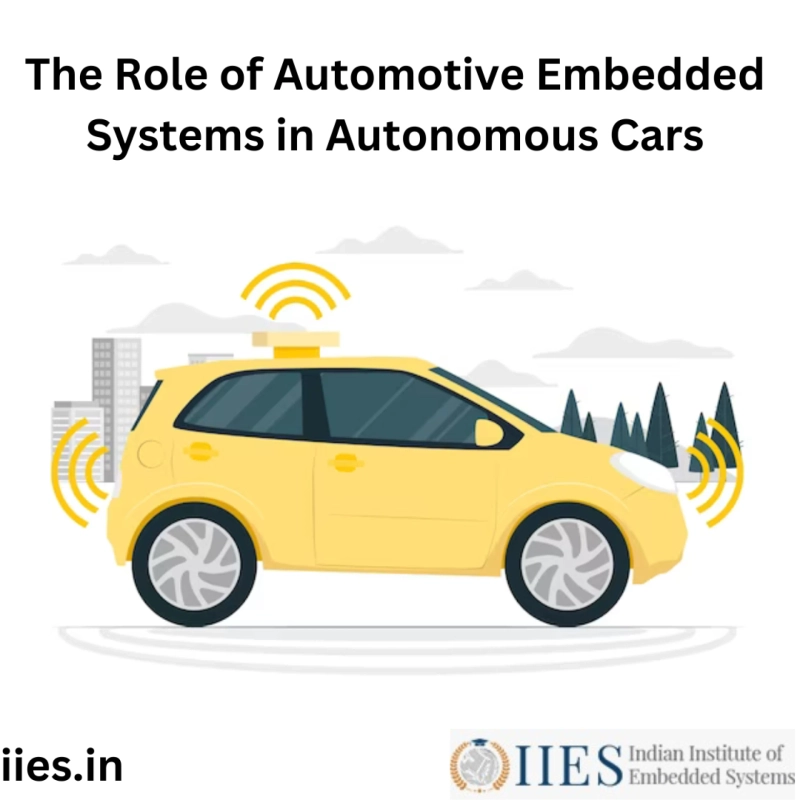Introduction
In the rapidly evolving landscape of automotive technology, the concept of autonomous cars has moved from science fiction to reality. Autonomous cars, also known as self-driving cars, hold the promise of transforming the way we travel by providing safer, more efficient, and convenient transportation. At the core of this transformative technology are automotive embedded systems. In this blog post, we will explore the pivotal role played by these embedded systems in making autonomous cars a reality.
Understanding Automotive Embedded Systems
Before we delve into their role in autonomous cars, let's establish what automotive embedded systems are. Automotive embedded systems are specialized computer systems integrated into vehicles to control and manage various functions, from engine performance to safety features and infotainment systems. They are the digital brains of modern cars, ensuring seamless operation and enhancing the driving experience.
The Journey to Autonomous Cars
Sensor Fusion and PerceptionThe journey to autonomous cars begins with perception. Embedded systems in autonomous vehicles are equipped with an array of sensors, including cameras, lidar, radar, and ultrasonic sensors. These sensors work together to perceive the car's environment in real-time. For example, cameras capture visual data, while lidar and radar provide information about the car's surroundings.
Data Processing and Decision MakingOnce the sensors capture data, automotive embedded systems come into play. These systems are responsible for processing the vast amount of data generated by the sensors. Advanced algorithms analyze this data to make real-time decisions, such as detecting obstacles, recognizing road signs, and calculating the car's position on the road.
Control and ActuationAfter processing the data and making decisions, embedded systems control the car's actuators. Actuators are responsible for making physical changes to the vehicle, such as steering, accelerating, and braking. Embedded systems ensure that these actions are executed accurately and safely.
Key Components of Automotive Embedded Systems in Autonomous Cars
Central Processing Unit (CPU)The CPU is the heart of an embedded system. In autonomous cars, it processes data from sensors and runs complex algorithms for decision-making. It ensures that the car responds to its environment in real-time.
MicrocontrollersMicrocontrollers are specialized chips that control specific functions within the car, such as engine management, braking, and steering. They receive instructions from the central system and execute them precisely.
Memory and StorageMemory and storage are crucial in automotive embedded systems. They store data, algorithms, and software updates. This ensures that the car can continue functioning seamlessly even after extended use.
Operating SystemsEmbedded systems use real-time operating systems (RTOS) to manage tasks efficiently. RTOS ensures that critical functions, such as collision avoidance, take priority and are executed without delay.
Real-world Applications
Let's look at how automotive embedded systems enable specific functionalities in autonomous cars:
Lane Keeping and Adaptive Cruise ControlEmbedded systems process data from cameras and radar sensors to keep the car within its lane and maintain a safe following distance from other vehicles. They adjust steering and braking as needed.
Traffic Sign RecognitionCameras capture images of road signs, and embedded systems use image recognition algorithms to identify and interpret them. This information is then used to adjust the car's speed and provide warnings to the driver.
Obstacle Detection and Collision AvoidanceThrough sensor fusion, embedded systems detect obstacles such as pedestrians, other vehicles, or objects in the road. They take immediate action, such as applying brakes or steering, to avoid collisions.
The Indian Institute of Embedded Systems (IIES)
As the field of automotive embedded systems continues to expand, the need for skilled professionals is on the rise. If you're intrigued by the world of embedded systems and aspire to contribute to the development of autonomous cars, the Indian Institute of Embedded Systems (IIES) offers a range of courses and learning opportunities in programming and embedded systems.
Courses Offered by IIES
Embedded Systems Fundamentals: This course provides a solid foundation in embedded systems, including microcontroller programming and sensor interfacing.Advanced Embedded Systems Programming: For those seeking to deepen their programming skills, this course covers advanced topics, including real-time operating systems and automotive-specific programming.Automotive Embedded Systems: This specialized course focuses on automotive applications, offering insights into CAN communication, automotive protocols, and hands-on projects.RTOS for Embedded Systems: If real-time operating systems pique your interest, this course provides an extensive understanding of RTOS and its applications in embedded systems.Conclusion
Automotive embedded systems are the unsung heroes of autonomous cars, enabling them to perceive their environment, make decisions, and take actions in real-time. As autonomous technology continues to evolve, so too will the role of these systems in shaping the future of transportation.
If you're eager to be a part of this exciting journey and contribute to the development of autonomous cars, consider exploring the courses offered by the Indian Institute of Embedded Systems (IIES). Whether you're a student looking to kickstart your career or a professional aiming to enhance your skills, IIES can equip you with the knowledge and expertise needed to thrive in the world of programming and embedded systems.
Take the first step towards an exciting career in automotive technology by exploring the courses offered by IIES today!


